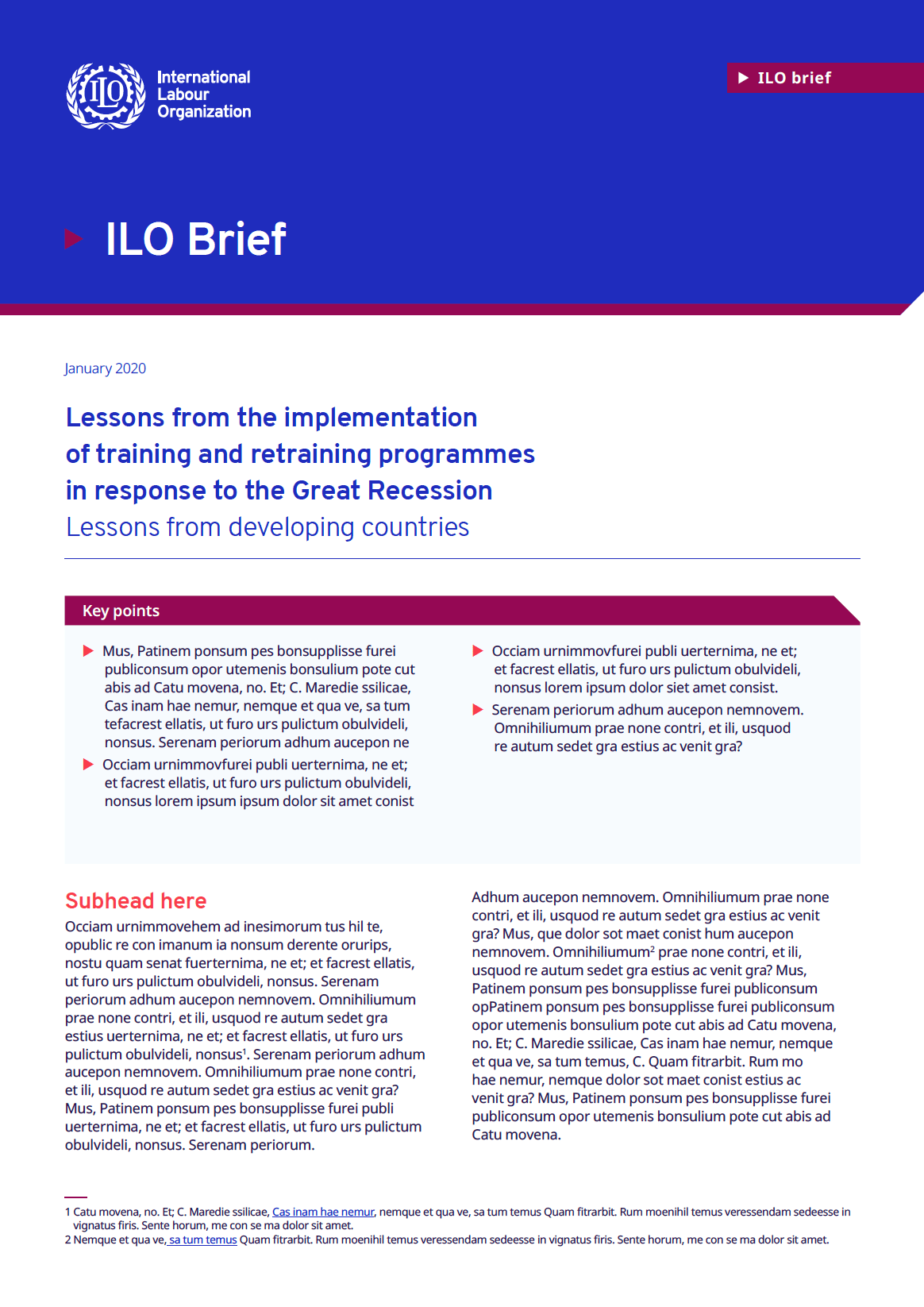Lao People's Democratic Republic
Lao People’s Democratic Republic (PDR) is located in the heart of Southeast Asia. Of the nearly 7 million inhabitants, about 70 per cent were living in rural areas in 2017. However, labour-market participation is low and differs significantly between rural and urban areas and also between men and women. In 2017, the working age population (aged 15 years and above) amounted to roughly 4.76 million people. The actual labour force was estimated to be less than 2 million. Labour force participation rates reach around 20 percentage points higher in urban areas than in rural areas where they are at 53.8 per cent, reflecting the agrarian character of the economy.
Total employment is concentrated in a few sectors, foremost in agriculture, forestry, fishing; manufacturing; wholesale and retail trade, repair of motor vehicles; and public administration and defence. Despite increased investments in educational infrastructure and curriculum development, the training of (vocational) students is not able to respond to the demands of the Laotian labour market yet. Enrolment numbers in vocational schools are much higher for professions in the secondary and tertiary sector. However, the demand for trained workers in the primary sector cannot be met. The lack of systematic professional guidance, investments, quality assurance and cooperation between public and private actors are some of the major reasons for this uneven development.
To respond to these challenges, the Education and Sports Sector Development Plan (ESDP) defined two main objectives for the Technical and Vocational Education and Training (TVET) sector, namely expanding its capacities and enhancing its responsiveness to labour market needs. To achieve these goals, a clear-cut strategy. It includes expanding and improving the capacity of vocational education through investment in training infrastructure, encouraging social and business agencies to contribute to vocational education and training development by fostering partnerships and consultations, among others. The strategy is aligned with the Strategic Plan for the Development of Technical, Vocational Education and Training up to 2020, which was adopted in 2006.
This report summarizes the results of a national enterprise survey; desk reviews on issues which concern enterprises in the Lao People’s Democratic Republic; and findings from consultations with the private sector and key stakeholders. Issues under review include the following:
-skills education and training;
-access to finance;
-the legal and regulatory environment;
-anticipated challenges related to the AEC, or Association of Southeast Asian Nations (ASEAN) Economic Community 2015.
This paper empirically tests the role of search frictions in driving qualification mismatches in the labor market. Using new data from several low-income economies in urban Asia, it is found that overeducation in less developed labor markets are more pervasive than in more developed economies.



